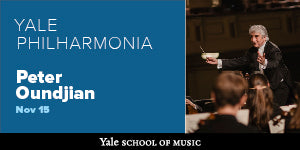The Prisoner, now enjoying its US premiere on Yale Repertory Theatre’s stage, is more parable than play, though it’s a parable that declines to reveal a clear lesson. A stripped-down story that foregrounds movement in favor of dialogue, The Prisoner follows the story of one man from crime through punishment, suggesting radical new ways of thinking about both.
The crime committed by Mavuso (Hiran Abeysekera) is both “unspeakable” and, in a way, understandable. It’s a crime that suggests a link back to the earliest history of theater: He finds his sister Nadia (Kalieaswari Srinivasan) in bed with his father. In rage and even jealousy, Mavuso murders his father offstage near the beginning of the play. What is revealed over the course of the next hour or so is the course of his punishment, beginning with a brutal physical act undertaken by his uncle, Ezekiel (Hervé Goffings), the brother of his dead father. If he survives this first penalty, Ezekiel tells him, then the rest of his punishment will follow.
sponsored by
The rest of his punishment, it turns out, is to be taken first to prison and then to a tropical forest, where he’s left to fend for himself. He must sit facing the prison, a puzzling twist that turns the prisoner into a guard, while no one is guarding him. We first learn this detail from a Visitor (Hayley Carmichael), whose storytelling frames the play. She’s an outsider who spends her life searching for the same feeling of aliveness and connection to the earth she tells us she once found while lying on her back in the grass as a child. The Visitor wanders into Mavuso’s story when searching for Ezekiel, whose knowledge of the natural world is believed to be limitless. He sends her to look for his nephew.
Are we visitors, like this woman, being asked to witness Mavuso’s punishment? Perhaps we’re guards, watching over him as he sits out his time. Or we, too, may be prisoners. After all, when Mavuso sits facing the prison, he faces us. In what ways are each of us imprisoned? Are we, too, suffering a long and mostly silent punishment? How will we know when we have served our time? When we have, will we be able to let go and walk away?
Much of the story is told through movement. Mavuso climbs, monkey-like, all the way up the stage wall as if up a tree. He builds a fire, he tries to befriend a rat, he sits cross-legged and stares as if across a vast landscape. Abeysekera’s impressive physicality—the way he uses his face, his hands, indeed his entire body—draws attention to the story’s physical spaces: a small, square jail cell; a huge, open forest. The set comprises scattered bits of dirt and wood, suggesting the aftermath of an explosion. One gnarled tree trunk provides a seat when one is needed, though the ground will do just as well.
In Mavuso’s few encounters with other humans, the dialogue is, for the most part, as spare and straightforward as the set. Little is spoken of emotion or philosophy. What Mavuso is thinking as he stares out at us—at the prison—is left to our imaginations. The passage of time is indicated by the rising and setting of the sun and the appearance of other visitors, who indicate how much time has elapsed.
The Visitor’s narration is more lyrical, both in its language and in Carmichael’s compelling delivery. And yet, we learn very little even from her about what it all “means.” Imprisonment, one must conclude, is not just a literal but also a figurative state of being. Thus, while The Prisoner might suggest some new ways to look at the social ill of mass incarceration in our time, it also gives us new ways to look at ourselves. As if to emphasize the universality of the questions the play raises, its actors hail from around the world and, even when playing members of the same family, employ different accents.
Created and directed by the acclaimed team of Peter Brook and Marie-Hélène Estienne, The Prisoner is based on an experience Brook had while traveling in Afghanistan before the Soviet invasion. Like the Visitor, he was sent by a sage to find a man doing penance by sitting outside a prison. Brook “forgot the crime committed, but not the man,” writes dramaturg Patrick Young in the play’s program. Brook, a two-time Tony Award winner, the co-founder (with Micheline Rozan) of the International Centre for Theatre Research in Paris and a director of more than 70 productions in London, Paris and New York, has set out to make sure that we don’t forget the man, either. And yet, the crime itself—as sordid as it is—does seem almost forgettable. Though Nadia visits Mavuso both in prison and on the hilltop, her relationship with their father and with Mavuso himself is never the most urgent issue before us.
“Adventurous audiences,” Yale Rep’s tag line reads in part. The Prisoner does require of its audience a little bit of work and patience. “Each moment of narrative ambiguity, every knot in the thread of the plot, is an opportunity to weave the fabric of the performance alongside the artists,” Young writes, calling upon theatergoers to make of this opaque drama their own clarity.
Like the crooked staff leaning against the upstage black wall throughout the performance, Mavuso seems twisted but not broken. And like the staff, he seems to be at rest only temporarily, waiting for the moment when he will begin his next journey. But that staff may be calling out to us as well: Will you pick me up and journey with us?
The Prisoner
Yale Repertory Theatre – 1120 Chapel St, New Haven
Now playing through November 17
(203) 432-1234
www.yalerep.org/…
Written by Kathy Leonard Czepiel. Photographed by Joan Marcus for Yale Repertory Theatre.









